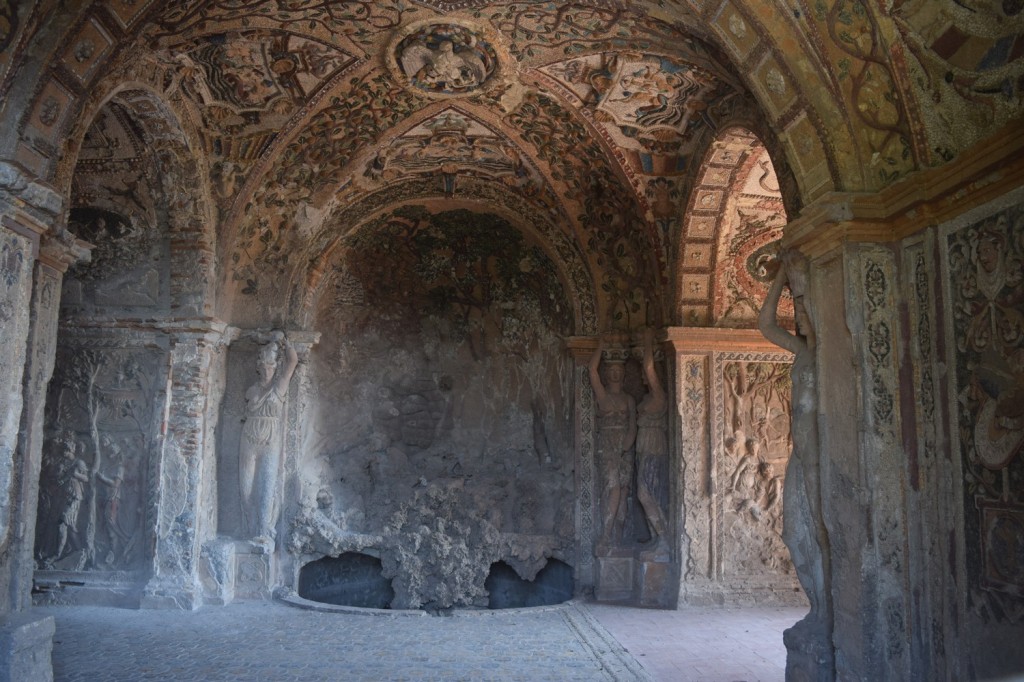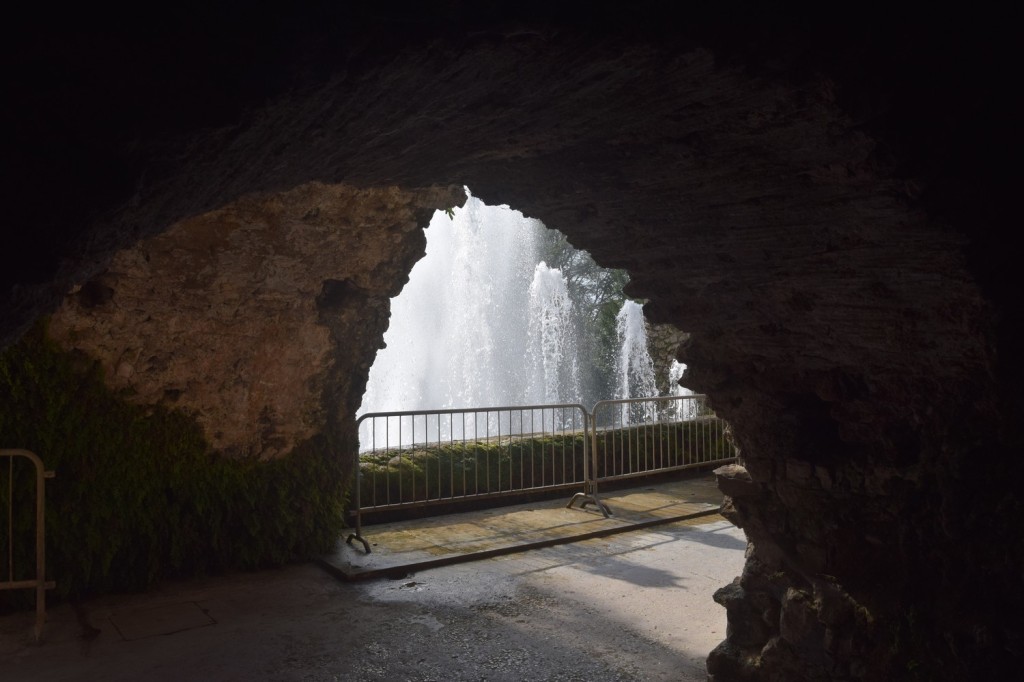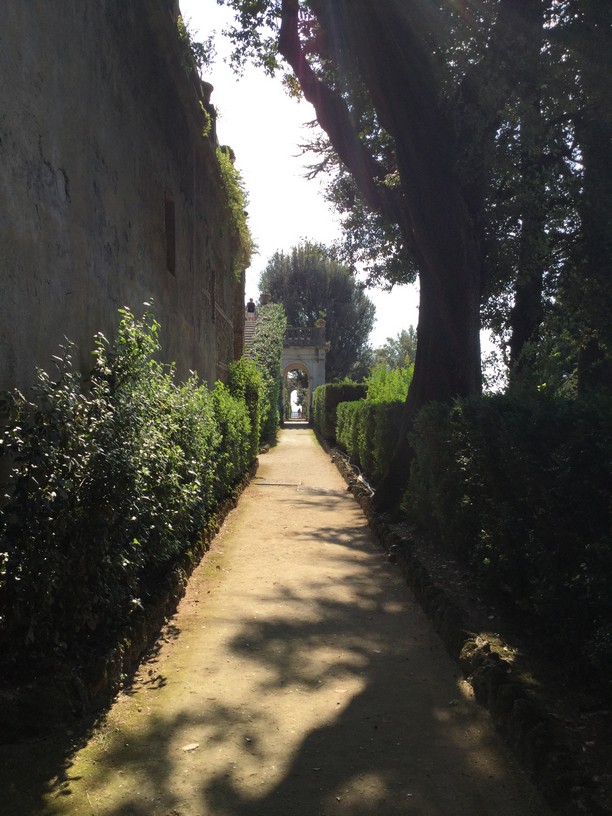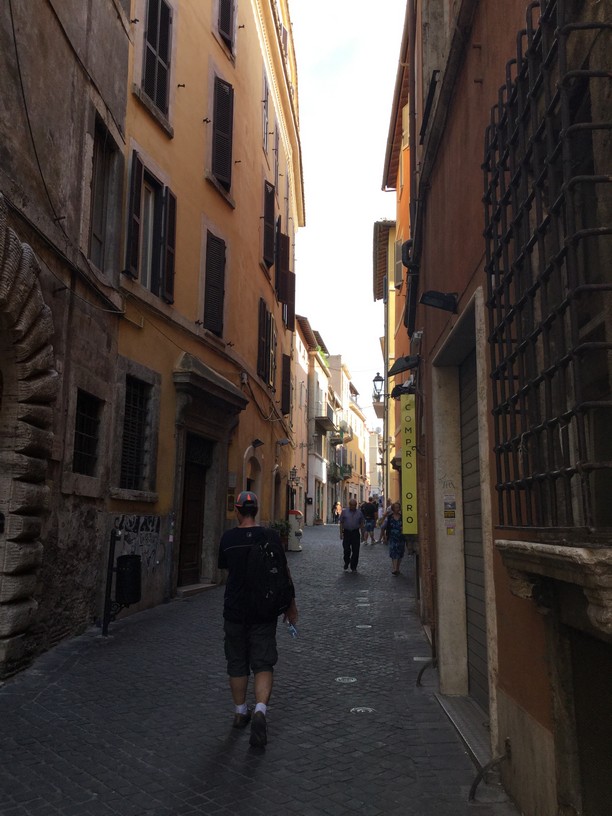
According to UNESCO, “the Villa d’Este in Tivoli, with its palace and garden, is one of the most remarkable and comprehensive illustrations of Renaissance culture at its most refined. Its innovative design along with the architectural components in the garden (fountains, ornamental basins, etc.) make this a unique example of an Italian 16th-century garden. The Villa d’Este, one of the first giardini delle meraviglie , was an early model for the development of European gardens.”
With a description like this, we had to make a visit. We were already in Tivoli to see Hadrian’s Villa, so after spending the morning among Roman ruins we spent the afternoon checking out a beautiful example of the Renaissance style.
After taking a bus from the villa that wound it’s way up the hill back to the town, we got out near the main square and took in the views overlooking the region.



After walking through a small building we entered a large open space. Originally the cloister of a convent, this was the main courtyard. From there we entered the main building where there were temporary art exhibits on display.


The villa was commissioned by Cardinal Ippolito II d’Este (1509–1572). He was the second son of Alfonso I d’Este, Duke of Ferrara. Ferrara was the grandson of a Pope and a relative of Lucretia Borgia. Little wonder d’Este was able to commission such a massive villa with so many fountains.


We walked through the ornate rooms of the main building of the villa, taking in the paintings done from floor to ceiling.



After spending time indoors, we made our way to the exit out the back into the garden. Nowadays visitors exit from the top and make their way down to the garden. However, in past times guests would enter through the garden and walk by the statues and fountains as they made their way up towards the villa.








The Villa d’Este became famous for its extraordinary system of fountains. There were fifty-one fountains and nymphaeums, 398 spouts, 364 water jets, 64 waterfalls, and 220 basins. They were fed by 875 metres of canals, channels and cascades, all of which worked entirely by the force of gravity, without pumps. It was an impressive engineering achievement for its time.














After finishing our time at the Villa d’Este, we made our way through the town back towards the train station. After going down cobblestone streets and crossing streams we finally reached Tivoli station before heading back to Rome.






Hey! Loved this post! I am planning a trip to Rome soon and I’m so excited to see Villa D’Este. Is it possible to see it all in one afternoon? Also, can you get there from Rome by train or should I buy one of those tours?
LikeLiked by 1 person
Thanks! Yes, you can do Villa D’Este in an afternoon–2 to 3 hours would be enough including any exhibitions happening inside the main building.
I would recommend against a tour as doing it on your own allows you to go at your own pace at a much cheaper cost. And it’s really easy to do. We took the train from the main station in Rome(Termini) and it was about 1.5 hours to get there. Trains leave to Tivoli almost every hour and you can find it using http://www.trenitalia.com. It’s only about 3 euros each way per person. One you are there it’s about a 15 minute walk from the station to the Villa D’Este. There will probably be taxis outside Tivoli train station if you want to take that option. We combined it with Hadrian’s Villa (Villa Adriana) for a full day but Villa D’Este by itself is a great way to spend a half day or more outside Rome. The town is very nice too with outdoor cafes and specialty shops.
LikeLike